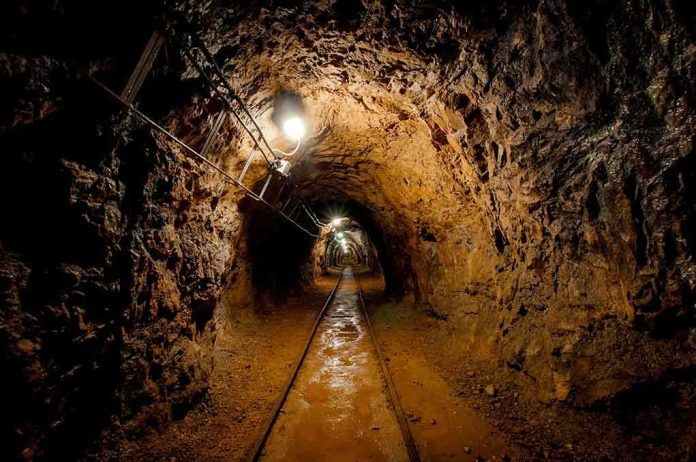
Six days alone in a flooded coal mine, with darkness swallowing every hope, Steven Lipscomb’s final ordeal forces us to confront the punishing realities and unanswered questions at the heart of America’s mining legacy.
Story Snapshot
- Steven Lipscomb endured six days trapped in a flooded West Virginia coal mine before his body was recovered.
- Rescue operations faced hazardous conditions, drawing statewide attention and the governor’s involvement.
- The tragedy exposes persistent safety challenges and the emotional toll on mining families and communities.
- Ongoing investigations may reshape mine safety enforcement across West Virginia and beyond.
The Night Coal Swallowed a Community Whole
Elkview, West Virginia, November 7, 2025: A routine shift at the aging mine turns catastrophic as sudden flooding traps Steven Lipscomb deep underground. For six days, rescue teams work around the clock, battling rising waters and unstable tunnels, while Lipscomb’s family and community cling to hope. The governor arrives onsite, the nation’s eyes turn to a small Appalachian town, and the mine’s shadow stretches across a region that has lived through tragedy before.
Search crews, equipped with pumps and diving gear, navigate treacherous conditions that echo past disasters. The mine’s labyrinthine tunnels, carved over generations, become a test of human resolve and technological limitations. Each hour underground, every decision made by the rescue command post carries the weight of history—and the heartbreak of families who have walked this path before. Lipscomb’s story quickly becomes emblematic of the risks and resilience that define West Virginia’s coal heritage.
Why West Virginia Coal Mines Remain Perilous
Coal mining in West Virginia is more than a job; it’s an inheritance, a community cornerstone—and, too often, a source of grief. The state’s coal industry has suffered repeated calamities: Sago Mine disaster in 2006, Upper Big Branch in 2010, and now Elkview’s flooded tunnels. Despite reforms and regulatory scrutiny, aging infrastructure and unpredictable weather continue to conspire against miners. Flooding, poor ventilation, and outdated warning systems remain stubbornly persistent threats, especially in older mines where economic pressure often trumps safety upgrades.
Heavy rainfall in the days before the incident likely contributed to the mine’s flooding, overwhelming barriers built decades ago. As the water rose and darkness set in, Steven Lipscomb faced an ordeal that few can imagine and none should endure. His plight exposes the fragile balance between economic necessity and human safety—a tension amplified by each new accident, each family left waiting for news that rarely brings relief.
Rescue Efforts, Public Outcry, and Political Response
Governor Morrisey’s arrival at the mine signals the gravity of the situation. Rescue teams, local officials, and federal inspectors from MSHA coordinate efforts under intense scrutiny. The mine operator pledges full cooperation amid mounting legal and public pressure. Statements from the governor and rescue leaders emphasize the courage of those involved and vow a thorough investigation. The community gathers, united by grief and demanding accountability as investigators begin piecing together the chain of failures that led to Lipscomb’s death.
Public attention shifts rapidly from the search itself to broader questions: Why do such tragedies persist? What reforms are truly effective? As the news of Lipscomb’s recovery spreads, calls for stronger oversight and improved emergency protocols intensify. The mine’s operator faces possible shutdowns and legal consequences. For the families, the answers are never enough. Each new disaster reopens wounds that never fully heal in communities built on coal and sacrifice.
The Ripple Effect: Safety, Scrutiny, and the Future of Mining
The immediate impact is felt by those closest to the tragedy—Lipscomb’s family, his coworkers, and a town that has seen far too many funerals. But the repercussions stretch farther. Industry-wide, mining companies and regulators revisit emergency preparedness, flood mitigation strategies, and training protocols. State and federal agencies brace for renewed political pressure to enforce stricter safety standards, even as some argue that economic realities force dangerous compromises. For every miner who enters the darkness, the stakes remain high; for every family, hope is tempered by experience.
Experts highlight the need for robust risk assessments, improved technology, and regular safety drills. Labor advocates demand greater worker protections and transparency. Some industry voices warn that overregulation could hurt local economies, but recent history makes clear that the cost of failure is measured in lives. As investigations continue, the story of Steven Lipscomb becomes a rallying point—a stark reminder that beneath the surface, the battle between progress and peril is far from over in West Virginia’s mines.







